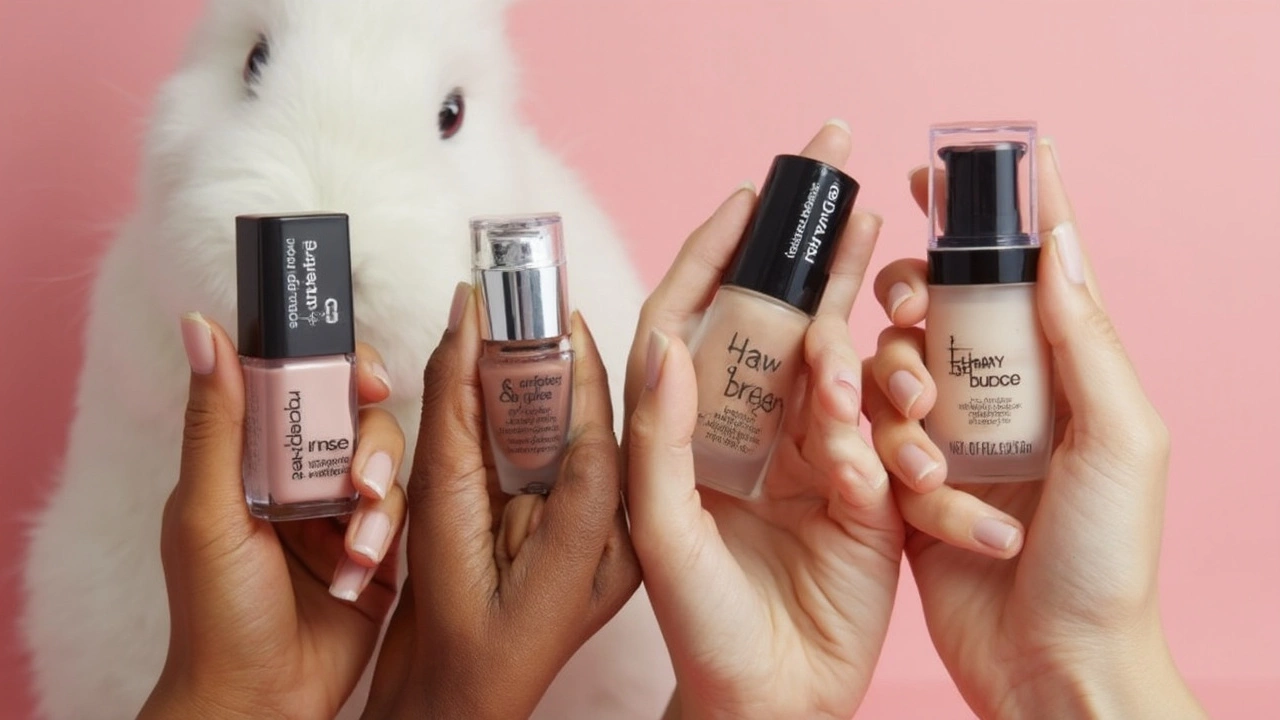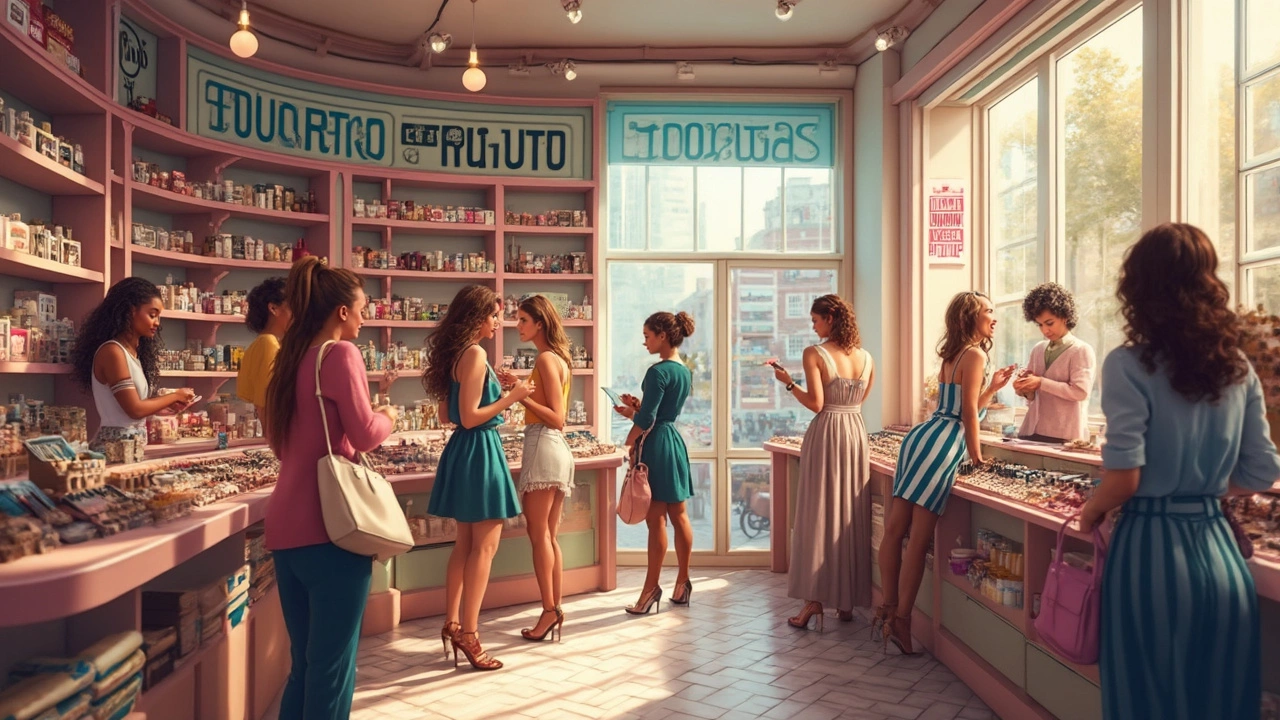Here’s a fact that might surprise you—when COVERGIRL declared itself cruelty-free back in 2018, it sent shockwaves through the beauty world. Millions of makeup lovers suddenly saw one of the biggest drugstore brands with a fresh, ethical twist. But a few years later, you might wonder, did they stick to this promise?
If you check the COVERGIRL website right now, you’ll spot their proud “Cruelty-Free” badge, and the Leaping Bunny certification is still in place. But not all badges are created equal, and things in the beauty industry change fast. It’s smart to stay updated and know exactly where your makeup dollars are going.
So, what should you look for when checking if a brand is really cruelty-free? First, don’t trust packaging alone. Some companies slap on animals or vague phrases for marketing, but true cruelty-free status means no animal testing—at any stage of making or selling the product. It also means not selling in places where animal testing is required by law.
- COVERGIRL’s Cruelty-Free Status: The Current Reality
- What Makes a Brand Truly Cruelty-Free?
- How to Find and Trust Cruelty-Free Labels
- Tips for an Easy Animal-Friendly Makeup Routine
COVERGIRL’s Cruelty-Free Status: The Current Reality
Fast forward to 2025, and COVERGIRL is still loudly calling itself a cruelty-free makeup brand. That’s not an empty claim—they’ve got the Leaping Bunny certification, which is one of the strictest stamps you can get for animal-friendly beauty. The Leaping Bunny program checks that no animal testing happens at any point, even with ingredient suppliers. COVERGIRL still appears on the official Leaping Bunny list, and they talk about this all over their site and social media.
Back in 2018, this was a big deal because COVERGIRL was the biggest drugstore brand to ever get certified. Their parent company, Coty, went through audits to get the paperwork sorted. Since then, there haven’t been any public scandals or reports of animal testing with COVERGIRL. They’re not selling in mainland China (where animal tests are sometimes required by law), and fans have kept an eye out for any changes. So far, none.
But, brands can change policies quietly, so it pays to watch for updates. Go straight to these official sources if you want to double-check:
- The Leaping Bunny database
- COVERGIRL’s website FAQ section
- Recent statements from Coty, COVERGIRL’s parent company
Quick tip for shoppers: the only real certification COVERGIRL has is Leaping Bunny. You might see the PETA bunny on brands, but the rules aren’t as strict. Always go for Leaping Bunny if you want trustworthy cruelty-free makeup.
| Fact | Status (May 2025) |
|---|---|
| Leaping Bunny Certified? | Yes |
| Sells in Mainland China? | No |
| Parent Company Animal Testing? | Coty is not fully cruelty-free |
| PETA Cruelty-Free? | No |
Keep in mind: COVERGIRL itself is cruelty-free, but Coty, their parent company, still sells other brands that do animal testing. So, if you want a parent company that’s 100% cruelty-free, double-check before shopping.
What Makes a Brand Truly Cruelty-Free?
Lots of beauty brands love sticking “cruelty-free” on their packaging, but what does that really mean? To be truly cruelty-free, a company must follow some pretty clear rules that animal lovers care about.
First off, a real cruelty-free makeup brand makes sure that none of their finished products or ingredients are tested on animals—anywhere, by anyone. This rule covers not just their own company, but also any suppliers or third parties involved in the process. Here are the essentials for you to spot the difference:
- No animal testing on the final product—ever. If they tested in the past but don’t anymore, they can still be considered cruelty-free, but ongoing animal testing wipes their claim out.
- No animal testing on ingredients—even if the finished product is safe, nothing in it should have been tested on animals by the brand or their ingredient suppliers.
- No third-party testing—sometimes brands sneak around the rules by hiring another lab to do the dirty work. Certified cruelty-free brands don’t do this.
- No selling in countries that require animal testing by law—China used to be the biggest culprit here, but rules have started to change. Still, not every product is exempt, so a true cruelty-free brand won’t launch anything needing animal tests just to enter a market.
The Leaping Bunny certification is one of the strictest standards worldwide. A brand with a legit Leaping Bunny logo has to jump through yearly audits and keep proof of all their supply chain safety. COVERGIRL still carries this badge as of 2025—something not many big brands can say.
| Requirement | Must Be Met? |
|---|---|
| No animal testing on final product | Yes |
| No animal testing on ingredients | Yes |
| No third-party animal testing | Yes |
| Doesn’t sell in markets that require animal testing | Yes |
| Certification from strictly verified group (like Leaping Bunny) | Strongly recommended |
If you want to double-check a brand, visit Cruelty Free International or look for the product in the Leaping Bunny database. Don’t just rely on what’s written on the bottle! Real cruelty-free status goes way beyond marketing—and knowing this puts you in the driver’s seat when you’re shopping for beauty.

How to Find and Trust Cruelty-Free Labels
Sorting real cruelty-free brands from the not-so-honest ones isn’t always a walk in the park. There are loads of logos and claims out there, and some are just for show. Let’s clear things up so you can buy with confidence.
The gold standard right now is the Leaping Bunny logo. If you spot this on a product—like the ones from COVERGIRL—that means the brand has gone through some strict rules. Leaping Bunny checks the whole supply chain, not just the finished makeup. PETA’s bunny logo is pretty common too, but it’s a bit easier for brands to get, so it’s not always as tough as Leaping Bunny.
If a package only says “not tested on animals” or just uses generic bunny artwork, watch out. There aren’t any government rules about who can put that on a box, so it’s easy for brands to pretend. Real cruelty-free labels come from trusted third-party organizations, not just clever marketing teams.
- Look for the Leaping Bunny symbol – it’s regulated and has a verified audit trail.
- The PETA Cruelty-Free logo is a good start, but double-check on PETA’s official database.
- Check if the brand is listed on official cruelty-free lists, like Cruelty-Free Kitty or Logical Harmony.
- If you shop online, search the brand’s FAQ or reach out to customer service and ask about third-party certifications.
Here’s a quick cheat sheet on the main logos you’ll see and what they actually mean:
| Logo | What It Means |
|---|---|
| Leaping Bunny | Full supply chain checked. Toughest standard. Regular audits. |
| PETA Bunny | Brand signs a statement; less strict on supply chain part. |
| Unverified Bunny Art | No oversight. Could mean anything—or nothing. |
Sometimes, even big names slip up or change policies when they move into markets like mainland China, where animal testing is sometimes required. That’s why it’s smart to keep an eye on recent news about your favorite makeup brands. Sites like Ethical Elephant keep updated lists if you want a one-stop check.
If you want to avoid guesswork, stick to brands on the Leaping Bunny or PETA official sites. It’ll save you hours of label decoding and make sure your money goes where it helps animals most.
Tips for an Easy Animal-Friendly Makeup Routine
Building an animal-friendly makeup bag isn’t nearly as hard as it seems. You don’t need to toss all your current products overnight—instead, start by swapping everyday essentials for options that are truly cruelty-free, like COVERGIRL. Here’s how you can pull it off without feeling overwhelmed or breaking the bank.
- Check those logos. The quickest way to spot real cruelty-free makeup is to look for trusted badges. The Leaping Bunny is gold—it means zero animal testing at every product stage. Sometimes PETA’s bunny gets used too, but the Leaping Bunny standard is stricter.
- Go ingredient by ingredient. Some products are labeled cruelty-free, but sneak in animal-based ingredients. If you want full-on vegan, look for both "cruelty-free" and "vegan" on the packaging, or double-check online product pages.
- Use apps and online lists. Resources like Cruelty-Free Kitty, Logical Harmony, or the Leaping Bunny program website keep updated lists of brands so you don’t have to guess on your next shopping trip.
- Watch for sales at the drugstore. You don’t need a luxury budget. Brands like COVERGIRL, e.l.f., Milani, and Wet n Wild all land firmly in the cruelty-free zone and are affordable too.
Ever wondered just how much the makeup business has changed? According to credible 2024 data, over 50% of new makeup products on U.S. drugstore shelves now claim some form of cruelty-free status. That’s a dramatic jump from just a few years ago.
| Year | % Drugstore Makeup Cruelty-Free |
|---|---|
| 2015 | 24% |
| 2020 | 38% |
| 2024 | 52% |
If you’re not sure about a brand, reach out to them directly or scroll through their FAQ. Most truly animal-friendly companies are loud and proud about their values. With a bit of practice, picking cruelty-free makeup will be just as easy as grabbing your morning coffee. You’ve got this.

